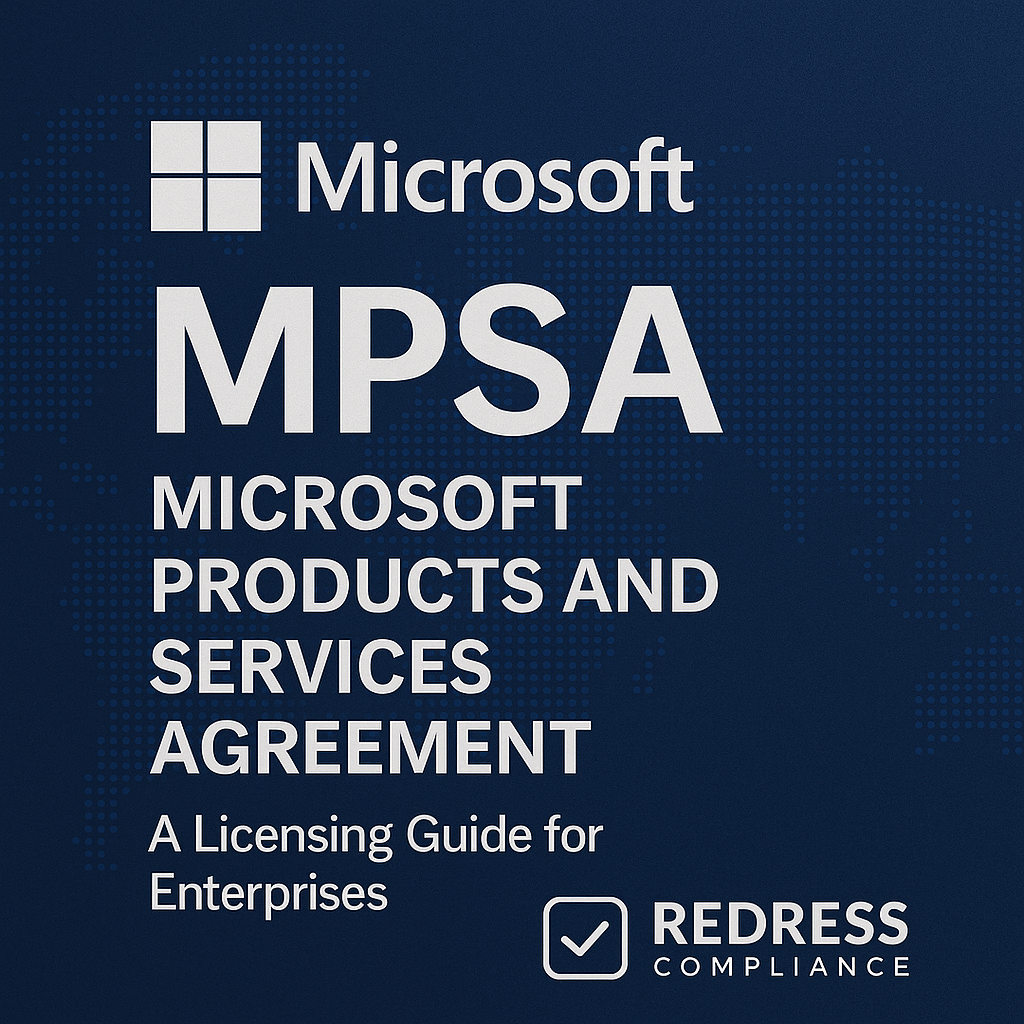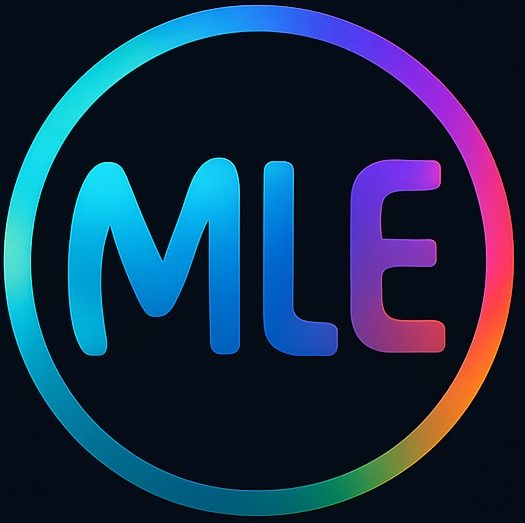Microsoft MPSA

Introduction – Why Microsoft MPSA Still Matters for Some Enterprises
In a cloud-first era, EA and CSP often steal the spotlight in Microsoft licensing discussions. With Microsoft pushing subscription models and multi-year commitments, one might assume the MPSA is obsolete. However, MPSA still serves a purpose for many enterprises.
It remains useful for organizations that need to buy Microsoft software and services on their own timeline without being locked into a long contract.
IT procurement leaders often appreciate MPSA’s freedom: there’s no organization-wide requirement or looming renewal deadline forcing their hand.
This guide explains how MPSA works, how it differs from EA and CSP in 2025, and when it might be the right fit for your enterprise licensing strategy.
For an overview, Microsoft Volume Licensing Programs: How to Choose (and Negotiate) the Right Model for Your Enterprise.
What is the Microsoft Products and Services Agreement (MPSA)?
Microsoft MPSA is a transactional volume licensing agreement for organizations that want flexibility.
It lets companies purchase Microsoft products—on-premises software or cloud subscriptions—under one umbrella contract. Unlike an EA, the MPSA has no expiration date and no company-wide licensing mandate.
Once you sign it, the agreement stays active indefinitely, and you add licenses only as needed. Microsoft pitches MPSA to mid-sized and large customers (around 250+ users), but there’s no strict minimum.
In essence, MPSA provides volume licensing benefits (centralized management, volume pricing tiers) without requiring a long-term, all-in commitment.
It’s designed for buyers who prefer to pay-as-they-go while keeping control over what they buy and when.
How MPSA Licensing Works
MPSA is an open-ended agreement. It doesn’t expire after a set term, and you aren’t obligated to spend a certain amount or license every user. You buy licenses on demand as needs arise.
If only one department needs a certain software, you can purchase it just for that department. If you don’t need new licenses in a given year, you simply don’t buy any – there are no penalties or true-ups for under-utilization.
MPSA also supports a mix of purchase types. Under the same agreement, you can acquire perpetual software licenses (e.g., Windows or Office) and subscribe to cloud services (e.g., Microsoft 365).
Everything is tracked in one portal (Microsoft Business Center) for easy management and oversight. Azure isn’t sold via MPSA – it requires a separate agreement (like an MCA or CSP). Software Assurance is optional on MPSA purchases, so you decide whether to add upgrade coverage per license.
MPSA vs EA vs CSP – Key Differences
MPSA vs. Enterprise Agreement (EA): An EA is a 3-year contract for large enterprises (500+ users) that mandates licensing all users for select products company-wide. In return, it offers deeper built-in discounts and fixed pricing for the term.
MPSA, by contrast, has no fixed term or minimum user count. You purchase only what you need, when you need it. The trade-off is that MPSA’s pricing per license is generally higher since you’re not committing to volume upfront.
MPSA vs. Cloud Solution Provider (CSP): CSP is Microsoft’s subscription program through partners, ideal for cloud-only purchasing with monthly flexibility. It allows you to scale user counts up or down easily for services like Microsoft 365.
MPSA can also handle cloud subscriptions, but it’s more static – you typically buy a set number of seats for a year at a time. Additionally, CSP is exclusively for cloud services, whereas MPSA encompasses both cloud and on-premises services under a single agreement.
In short, CSP offers maximum agility for cloud licensing (with partner support), while MPSA provides a one-stop shop for mixed software and cloud needs, albeit with less day-to-day flexibility for cloud adjustments.
Cost Drivers in MPSA Licensing
Volume Discounts: MPSA utilizes a point-based system, where accumulating more license purchases can advance you to higher price levels. However, the discounts at each level are modest compared to an EA.
In fact, Microsoft is flattening volume discounts for cloud services – meaning buying 50 or 500 Microsoft 365 seats might now cost nearly the same per seat under MPSA. Large orders still help a bit on pricing, but not as dramatically as in traditional volume licensing.
On-Premises vs. Cloud Costs: The type of product influences how you pay. Perpetual software licenses via MPSA are a one-time cost (capex), often with an option to add Software Assurance for upgrades.
In contrast, cloud subscriptions (like Microsoft 365) are ongoing expenses (opex) that you’ll budget for annually or monthly. Over several years, a subscription’s total cost may exceed a one-time license, but it includes ongoing updates and cloud features.
When planning your spend, consider that MPSA lets you mix these models to suit different needs. Also note, Azure usage isn’t sold through MPSA so that Azure costs would be handled separately (for example, via an MCA or CSP).
Keeping on-prem and cloud purchases in one MPSA can simplify administration, but always compare if certain cloud workloads might be cheaper through a CSP arrangement.
Advantages of Microsoft MPSA
- No Minimum Requirement: There’s no hard threshold to start an MPSA. Microsoft recommends it for around 250+ users, but you can enroll even if you have fewer. You’re not forced to buy more licenses than you need just to qualify.
- High Flexibility: MPSA offers freedom to purchase on your terms. You’re not locked into a multi-year commitment or rigid scope. If your needs change – whether scaling up or down – you can adjust your Microsoft usage without waiting for a renewal window. This helps avoid paying for software you don’t use.
- Unified License Management: One MPSA can cover a wide array of Microsoft products and services. All your purchases are managed under a single agreement and portal, making it easier to track licenses and ensure compliance. For organizations with multiple departments or locations, you can set up sub-accounts (Purchasing Accounts) under the MPSA, allowing each division to purchase what it needs while still consolidating records centrally. This streamlined approach simplifies procurement, especially for project-based or departmental software needs.
Limitations and Risks of MPSA
- Smaller Discounts: Because you’re not making large upfront commitments, you generally pay closer to list prices under MPSA. Volume price breaks exist but are limited. Large enterprises might find that, over time, their licensing costs run higher with MPSA than they would under a deeply discounted EA deal.
- Cloud De-emphasis: Microsoft’s strategic focus is now on cloud-first programs like CSP and the Microsoft Customer Agreement. MPSA isn’t getting much new investment or exclusive deals. Microsoft has even retired older licensing programs (like Open License) as it streamlines offerings. There’s a possibility that MPSA could be phased out or merged into newer models eventually. Relying on MPSA long-term means you should stay alert to Microsoft’s roadmap and be ready to transition if needed.
- Transition Effort: Moving from MPSA to another program (EA, CSP, etc.) later will require careful planning. You’ll need to align expiration dates, migrate subscriptions, or account for owned licenses during the switch. It’s doable, but it adds work and potential temporary overlap in costs. In short, while MPSA is a great interim or flexible solution, having an exit or evolution plan ensures you’re not caught off guard if Microsoft shifts direction.
Negotiation Strategies for MPSA
- Leverage EA Pricing: Research what an EA or other licensing options would cost for your needs. Use those figures as a benchmark when negotiating MPSA deals. Showing your reseller that you know your alternatives (or are considering an EA/CSP) can push them to offer more competitive pricing on MPSA orders.
- Bundle for Volume: Whenever possible, consolidate your license needs into larger orders. Buying in bulk under MPSA not only may qualify you for a better price level, it also gives you negotiating clout. For example, instead of separate purchases for Office, Windows, and SQL licenses, combine them into one big request – then ask for a volume discount due to the size of the deal.
- Ask for Cloud Perks: If you’re purchasing cloud subscriptions through MPSA, request concessions to offset MPSA’s lesser flexibility. This might include some Azure credit as part of the overall agreement (even if Azure is acquired through a separate deal), or negotiating a shorter term for certain cloud licenses required for a project. Make it clear that you’re looking for the best value and are open to whichever Microsoft channel provides it – this signals that the reseller needs to earn your cloud business under MPSA.
For more insights, Comparing Volume Licensing Programs: Open License vs EA
FAQ – Microsoft MPSA Simplified
Q1: Who is Microsoft MPSA best suited for?
A: MPSA is ideal for mid-sized organizations (around 250+ users) that want flexible purchasing. It works well for companies not ready for a multi-year EA commitment or those with a mix of on-premises and cloud needs.
Q2: How does MPSA differ from EA?
A: MPSA is an open-ended, pay-as-you-go deal with no company-wide requirement. An EA is a 3-year contract covering all users (500+ minimum), enterprise-wide, trading flexibility for larger pre-negotiated discounts and packaged benefits.
Q3: Can cloud services be purchased through MPSA?
A: Yes. Most Microsoft cloud subscriptions (e.g. Microsoft 365) can be bought via MPSA. The main exception is Azure – Azure usage isn’t sold under MPSA and must be acquired through a separate channel (like CSP).
Q4: Is MPSA being phased out?
A: Not officially as of 2025. Microsoft still supports MPSA, but it’s focusing on newer licensing models (CSP, Microsoft Customer Agreement). MPSA’s long-term future is uncertain, so it’s wise to stay updated on Microsoft’s licensing announcements.
Q5: What’s the minimum requirement for an MPSA?
A: There’s no strict minimum purchase or seat count. Any business eligible for v
